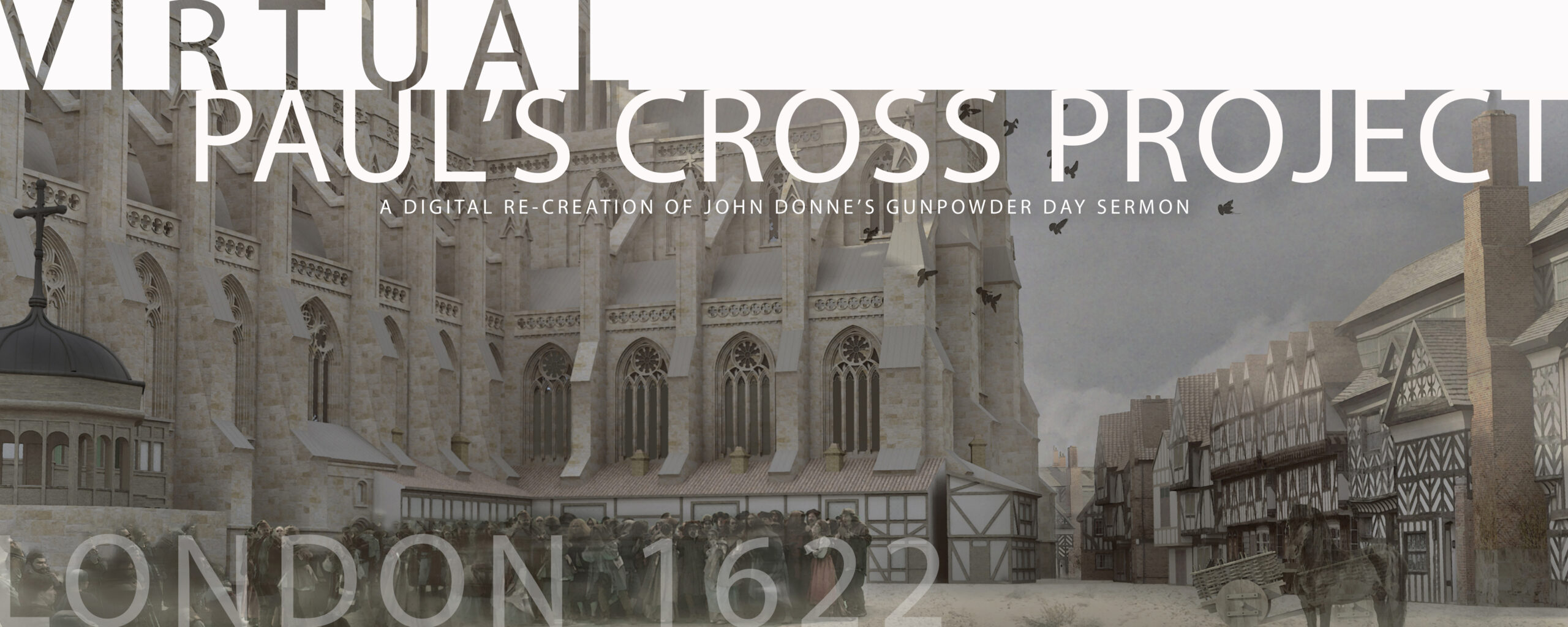
THE WEATHER

Figure 2: Paul’s Cross, from 50 feet. Image from the Visual Model, constructed by Joshua Stephens, rendered by Jordan Gray.

We learn, for example, that on this day the sun rises at 7:20 am and sets at 4:12 pm. Between 10:00 am and 12:00 noon, the sun rises from about 18 degrees of elevation above the horizon to 20 degrees of elevation, casting, even at noon long shadows across Paul’s Churchyard.
The temperature on this day typically varies from 44°F to 50°F, and the relative humidity typically ranges from 76% (humid) to 90% (very humid).The median cloud cover is 87% (mostly cloudy) and does not vary substantially over the course of the day.
On this day, the sky is clear or mostly clear only 24% of the time, partly cloudy 15% of the time, and mostly cloudy or overcast 56% of the time. There is a 70% chance that precipitation will be observed at some point during the day. When precipitation does occur it is most often in the form of moderate rain (71% of days with precipitation have at worst moderate rain), slight rain (9%), drizzle (8%), and heavy rain (7%).
The wind speed is 8 mph (gentle breeze) on average. The wind speed does not vary substantially during the course of the day.
Because of the chill in the air, people in the surrounding buildings have built fires; fires burning, we now know, an especially sulfurous kind of coal called seacoal, which was burned in such large amounts that “a seemingly perpetual cloud of sulfurous smoke [hung] over London” (Hiltner, 431), a smoke thick and abrasive, a smoke which William Dugdale blamed for some of the damage that time had caused to St Paul’s Cathedral.
In addition, although we have been unable to include this in our model, the place must have smelled really bad, with a pungent mix of rotten vegetables, industrial waste, human sewage, and manure from the ever-present dogs and horses. The title of Emily Cockyane’s 2008 book tells it all — Hubbub: Filth, Noise, and Stench in England, 1600-1770.
Actually, given the general bleakness of London weather in the fall and winter months of any year, with chilly temperatures, overcast skies, few hours of daylight, and a sun that never gets very high above the horizon, one of the interesting facts about Paul’s Cross sermons is that they apparently were held year-round, as evidenced by the fact that printed Paul’s Cross sermons date from every month of the year.
So Donne’s congregation when he preached at Paul’s Cross in the fall and winter must have been a hearty lot of folks, accustomed to being out of doors in challenging weather conditions. When they gathered for a Paul’s Cross sermon in November, they faced two or more hours of sitting or standing on a damp, chilly, overcast day, with the sun, low on the horizon, casting long shadows across the Churchyard.
There is a light breeze, made visible by the slight bend in the streams of smoke pouring out of chimneys in the commercial and residential structures that surround the north end of Paul’s Churchyard.
This smoke contributes to the general atmosphere of gloom. All the more reason to expect, even demand, a sermon that was entertaining as well as engaging, a witty sermon delivered by a man who knew how to combine verbal gymnastics, flashing intellect, dynamic and emotional delivery, and well-chosen posture and gesture into a compelling performance.
